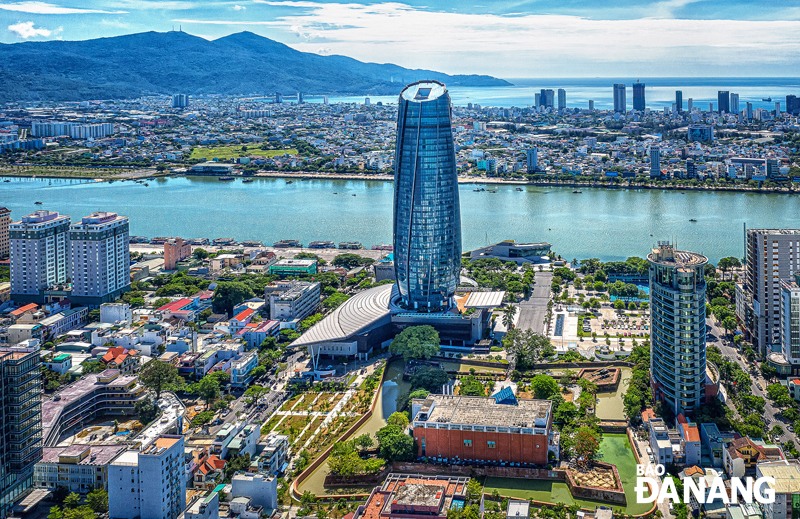Da Nang eyes to become an ecological, modern, smart and liveable city in Viet Nam
The 2015- 2020 period has seen some remarkable achievements made by Da Nang, hereby giving a stunning facelift to Da Nang and cementing its position as a key driver of future Central Viet Nam economic growth.
 |
| Over the past 5 years, the city has built up a modern and spacious urban appearance |
The most striking result is economic restructuring with the service sector now making up 65% of the economy, whilst the industry - construction 22.3%, the agriculture 2,3% and the taxes less subsidies on production 10,4%.
Between 2016 and 2019, Da Nang’s gross regional domestic product (GRDP) grew by around 7.5% annually, or a 1.5-fold increase against 2015.
More than 77,000 billion VND worth of domestic investment and nearly 1.4 billion US$ in FDI were channeled into the city. The number of enterprises has doubled, whilst the domestic and FDI capital has increased three times when compared with 2015.
The city has named among Viet Nam’s top five localities in the provincial competitiveness index (PCI), topped Viet Nam in the information and communications technology (ICT) index for 11 consecutive years. In addition, Da Nang is currently one of the best-performing localities in terms of administrative reform.
The past five years have also seen an impressive facelift for Da Nang tourism industry. Da Nang recorded an average annual growth rate of 16.73%, a 3.67% jump as compared to the target set by the municipal government. In 2019, the city welcomed a combined total of 8.6 million domestic and foreign visitors, 1.56 times higher than the figured reported in 2016.
Besides, the city has risen to fame as an emerging attractive destination for international events and festivals with the successful hosting of international-scale events, and most notably, the 2017 APEC Economic Leaders’ Week, the International Fireworks Festival, and the Smart City Summit, among others.
During the 2020-2025 tenure, the top priority will be given to effectively conducting economic restructuring, renewing the growth model, enhancing growth quality and economic competitiveness on the back of science and technology as well as innovation amid Industry 4.0, and building harmonious infrastructure in line with the master plan for the city’s major developments to 2030, with a vision to 2045.
Efforts should be made to realise Da Nang’s goals of building up the city’s stronger political system, promoting public consensus and solidarity, ensuring our national defence and security, and developing itself into a big socio-economic, startup and innovation hub, and the key driver of the Central Viet Nam and Central Highlands regions.
In detail, by 2025, Da Nang’s GRDP will record an increase of 9-10%, with an average annual per capita income reaching 5,000 - 5,500 US$.
Focus will be on accelerating economic restructuring in a bid to enable the dominant service sector of Da Nang economy to make up 63- 65%, whilst the industry - construction with 23 - 25%, the agriculture 1 -2% and the taxes less subsidies on production with 11 -12 %.
The total social development investment capital will see a hike of 9 - 10%, and the State budget revenue will be up 7 - 10% on average.
Likewise, the average annual population growth rate will reach 2.4%. Meanwhile. 90% of urban domestic wastewater, 100% of industrial effluent and 100% of domestic solid waste will be treated.
By 2030, Da Nang will have developed itself into an ecological, modern, smart and liveable city in Viet Nam, and the living standards of its residents will have considerably enhanced. By that year, the city will have completed the building of a smart city connected with the networks of smart cities in the country and in the Association of Southeast Asian Nations (ASEAN) region.
By DNO- Translated by A.T